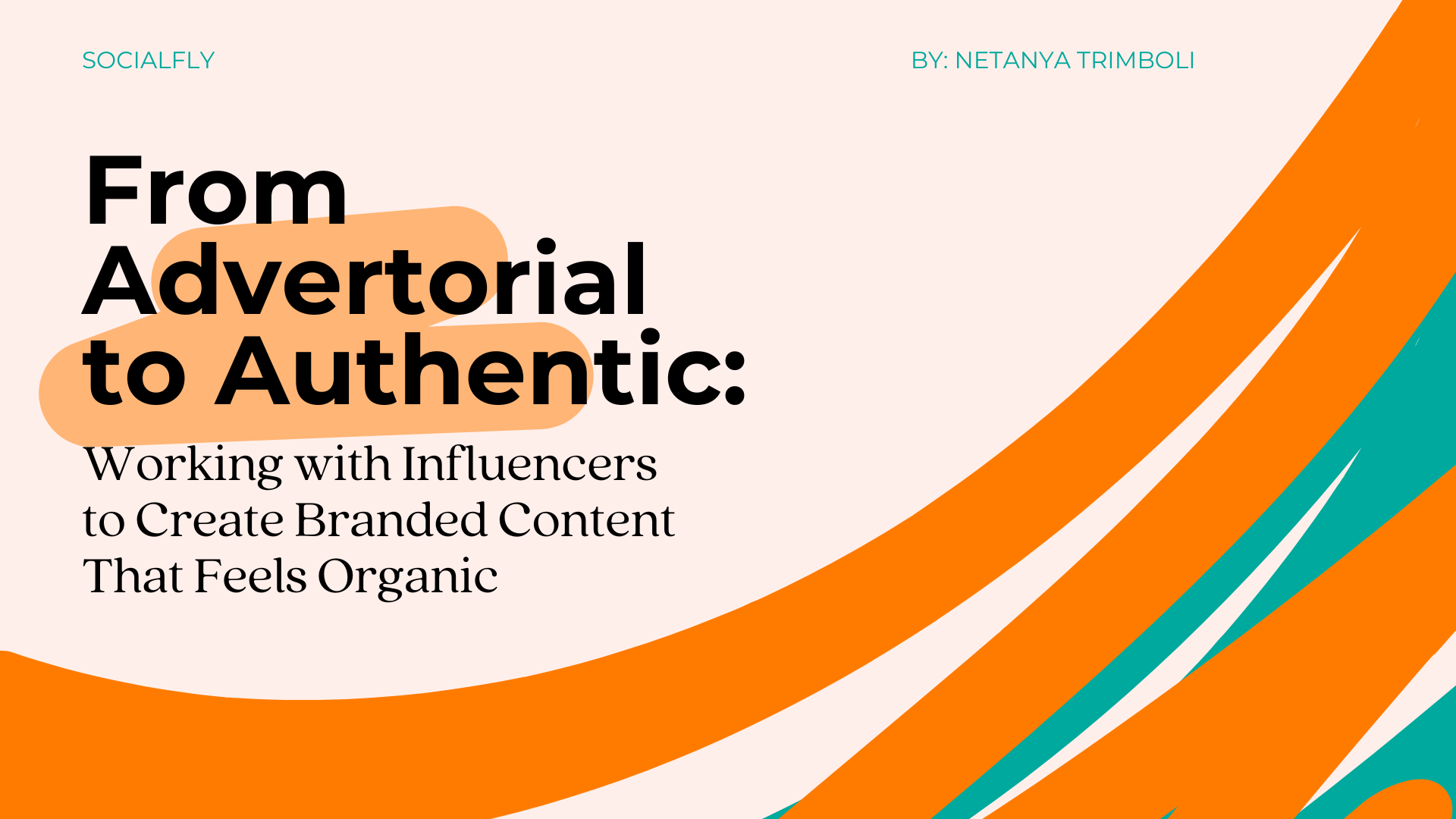
Here’s the scenario: After a long and careful selection process, you find an influencer whose style you love and they love your brand. Your brand firmly understands the importance of influencer marketing and you believe you’ve found authentic influencers who can tell your brand story. Their stats look great on paper and everyone is excited to partner…but then the content falls flat.
So what went wrong?
If you’re like many brands who are passionate about their products and services, required messaging might be to blame. Typically, this setback is a combination of too many messaging points and the influencer using those bullets verbatim instead of using their own words. And when this happens, you get the dreaded advertorial post that can be spotted a mile away.
The word “authentic” gets thrown around a lot, but what does it really mean? When looking at your campaign, there’s two main parts: the influencers themselves and the messaging. When you put these two things together, you have an influencer who looks and sounds natural talking about your brand. And that’s what’s going to get followers to pay attention!
In order to achieve this harmony, let’s first look at authentic influencers. The idea here is that your brand is so well aligned with the type of products or services they already use, that your sponsored content feels organic. In other words, even if you weren’t paying them, you could see them posting about your brand anyway.
There are many tools out there to help you find influencers, like SproutSocial or IZEA, but what matters most is knowing what to look for:
Now that you know how to find authentic influencers, let’s delve into how to create authentic messaging. Influencers should be speaking in their own voice, translating corporate bullets into conversational statements. It should feel like they’re talking to a friend and not presenting at a conference!
To set yourself up for success, it’s important to look at not just what influencers are saying, but also how they’re saying it.
With an awareness or consideration objective at stake, brands are often anxious to have influences spell out every last detail of a product or promotion. But this is the crux of what makes content advertorial, if not boring.
Instead, ask yourself, “what messaging do we need to pique viewers’ interest?” With influencers, you really don’t need to do more than that. Ultimately, consumers will need to go elsewhere to make a purchase, so that’s where additional details and answers to their questions should live.
If you can generate excitement (awareness) or drive them to point of purchase (consideration), then you’ve done your job, and a few short and sweet main messaging points to spark intrigue is really all you need to do to accomplish this.
Now that we’ve dialed back the messaging points, it’s important to find the right delivery so that it resonates with an influencer’s followers. While influencers know their audience better than anyone, sometimes they are eager to please the brand and will thus incorporate all the messaging exactly as it appears in the brief, abandoning their typical style and approach.
And when this happens, viewers know right away that it’s sponsored content and they keep scrolling. To combat this, we’ll now explore what to look for and how to correct things if they are moving in the wrong direction.
With the What and How in mind, take a critical eye to the concept stage to get in front of any potential challenges. Things to look for:
If you feel your influencer is going down the ad campaign path, take a few minutes to go through their feed. Take note of styles or themes that work well and think about how one of those could apply to your piece of content in a natural and authentic way.
Next, pitch it to them! Creators are typically thrilled when you take this step to understand their style and walk them off the brand-speak ledge. It might even inspire them with additional creative ideas to make your content stand out.
Here are some examples of popular approaches often seen in organic content that can also be applied to sponsored content to grab your audience’s attention:
Once you feel confident about the concept, the creator has the green light to produce content. While the concept stage should set a strong foundation, the content review is where you can really see how the messaging comes across and if your authenticity goals are being met.
Here’s a few questions to ask yourself:
There are many factors that contribute to a piece of content feeling authentic and earning those views and engagements your brands deserves. The important thing to keep in mind is that achieving authentic content doesn’t rest solely on the brand or the influencer; both parties need a voice and to be accountable. Through ongoing conversation and the guidance of a leading influencer marketing agency like Socialfly, you can ensure the proper checks and balances are in place to build and amplify authentic content that gets results.
Written by: Netanya Trimboli, Director of Influencer Marketing